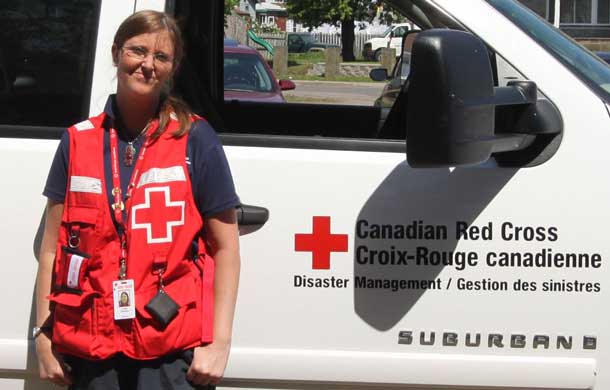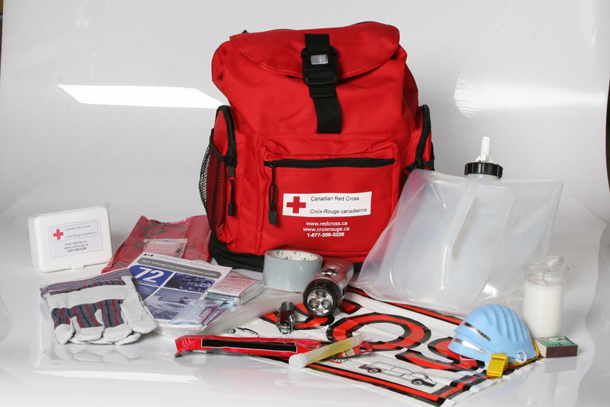

(L to R) Tim Steele, dignitary, Chief, Mike Morton, Lynda Henshell, Kevin Burke, dignitary, Sarah Flis.
THUNDER BAY- Moose Cree First Nation and the Canadian Red Cross are partnering in an effort to educate residents about making safe choices, preventing injuries, and responding to emergency situations. This common ground between Moose Cree First Nation and the Red Cross will be an excellent foundation for the partnership that will be developed in this community according to a statement issued by the Canadian Red Cross.
In the city, an emergency can be handled by the quick call to 911. In remote communities, often the local residents are in the position of being the first on the scene for accidents, or incidents where people need assistance.
The Strength & Spirit Campaign is an initiative that will work to improve and enhance relationships and partnerships between the Red Cross and First Nation communities in Ontario. The first milestone of this campaign is the establishment of a Red Cross satellite office in a First Nation community. This office will be the first of its kind in Ontario and will support the development and delivery of existing Red Cross programs and services (modified as necessary) or entirely new programs designed to meet local requirements.
The Moose Cree Traditional Territory extends from Hearst, Ontario in the west, to the Quebec border in the east, and from south of highway 11, points north toward the Albany River. Moose Factory is located within this traditional territory and is home to Moose Cree First Nation. The location of the satellite office in the community will be in the new Far North Emergency Preparedness and Response Centre of Excellence, which is already considered a community hub. A youth centre is also located within the same community and an Elder’s Gathering Centre is located nearby in Moosonee.
The Chiefs in Ontario (CIO) recognizes 133 First Nation communities within the province. One in four of these communities is accessible only by air year-round, or by air and ice road in the winter. Life in these communities is very different from what other Canadians may be used to.
- Poverty reduces the ability of some Aboriginal people to fulfill their basic needs. That ability plummets further when disaster strikes (such as flooding or forest fires). An estimated 80% of Aboriginal people living on reserves have an income of less than $30,000 per year.
- The child poverty rate for non-Aboriginal children in Canada is 15%. The poverty rate for Aboriginal children is almost 30%. Living in poverty has shown to result in poorer health conditions, over-crowded housing, lower educational attainment, increased risk of deviant behaviour, depression and other emotional problems and a higher instance of family dysfunction.
- Injuries are the greatest single cause of death for Aboriginal people under 45 in Canada, a much higher rate than in the general Canadian population.
- Drowning is the second most common cause of death among all Aboriginal people. In some communities boating-related drownings exceed the number of motor vehicle fatalities.
- First Nations, Inuit and Métis youth are disproportionately vulnerable to abuse. Nearly 40% of First Nations children living on reserve had experienced exposure to family violence.
- The overall suicide rate among First Nation communities is about twice that of the Canadian population. Aboriginal youth are 5 to 6 times more likely to die of suicide than their peers in the general population.
The ultimate goal is to improve the quality of life for members of First Nation communities.
Interested First Nation communities were invited to demonstrate their interest in hosting a satellite office by submitting a detailed proposal. Submissions were scored on a number of factors and site visits were made to the top two locations.
The Red Cross and community officials are pleased to announce that Moose Cree First Nation will be the site of the first Red Cross satellite office in an Ontario First Nation community. It is anticipated that the satellite office will open in the fall of 2012.






